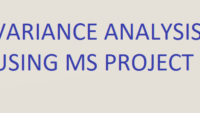A high level quick read of PMBOK6 gives a positive outlook for the Project Managers.
The guide looks more organized, pragmatic and has vivid graphical representations.
PMBOK6 is organized into three parts, Part1 is the Guide to the Project Management Body Of Knowledge, Part2 is The Standard For Project Management, Part3 is the Agile Practice Guide.
PMBOK6 Part1- The guide to the Project Management Body Of Knowledge
The first three chapters have been significantly improvised, in terms of the content and the graphical representations(workflow diagrams). Project Management Framework has been expanded to explain Operations Management in a more detailed manner, along with Project, Program, Portfolio management. Most interestingly, it explains the pre-initiation work( the phase that we all use in our projects but PMBOK earlier versions did not have clear explanation) clearly under project life cycle. And phase gates are added, which play a crucial role in the execution of projects at workplace, the entry, exit criteria and moving from one phase to the other.
The other helpful and interesting read areas are
- The role of the Project Manager expanded, updated and clarified.
- Tailoring- this is absolutely beneficial because a lot of organizations don’t take it seriously, not every single process is necessary for every organization to execute projects, Tailoring is essential for efficient execution of any project.
- PM’s sphere of influence: Project Team, Sponsors, Stakeholders.
- PMI Talent Triangle- Technical PM skills, leadership, Strategic Business Management. Says tech pm skills are core, but that is not enough. Efficient PM’s have all these three skills and are able to balance.
The most interesting of all is having a full section on Politics, Power and Getting things done. We all experience these three influencing factors day in and out working as PM’s. And don’t seem to get out of the mixed feeling and confusion when any one or all of those are exercised by the leadership or any others in the organization. PMI has taken effort to explain in terms of what they mean and how the PM should have the skills to manage, balance and get things done.
PMBOK6 Part2: The standard for Project management
Explains the process groups including pertinent info from Part1. The five process groups(Initiation, Planning, Executing, Monitoring and Controlling, Closing) are explained in this section.
PMBOK6 Part3: Agile Practice Guide
Agile Practice Guide has a total of seven sections and about 170 pages long. Explains the four life cycles: Predictive, Iterative, Incremental and Agile. There is a title that states, the role of the project manager in an Agile environment but it is what we already know when practicing Agile. But it acknowledges the fact that Agile does not have a clearly defined project manager role as the teams are self-organized, yet, Pragmatic Agile Practitioners and Organizations realize that the PM can add significant value.
There is also a section on Agile and PMO where the PMO practices in an Agile environment are clearly defined.
The guide is longer than the earlier version of PMBOK5 with additional guide on Agile and Part2. And adds significant value in terms of current project management practices, challenges and also gears up to both traditional and agile environments. It is a great contribution to the PM community by the PM’s for the PM’s.
#PMP #PMBOK6 #AgileGuide
#ProjectManagement #ProjectManager #PMInterviewQuestions #InterviewQuestions #CrackingPMInterview
Amazon Book ID: B072DYSC8Q







